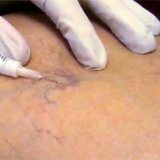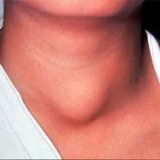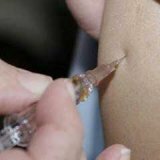Appendicitis: Species, Symptoms and Diagnosis
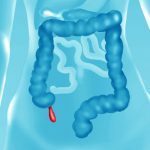 Appendicitis is the inflammation of the appendix of the cecum.Can develop in women and men, regardless of their age.The only category of patients who have never been diagnosed with this inflammation are infants( up to 1 year old).
Appendicitis is the inflammation of the appendix of the cecum.Can develop in women and men, regardless of their age.The only category of patients who have never been diagnosed with this inflammation are infants( up to 1 year old).
Appendicitis: causesAnd factors provoking the development of
Absolutely accurate causes of the onset and development of the inflammatory process in the appendixSo far it has not been established.There is an opinion that the disease can trigger the eating of sunflower seeds and watermelon with skin, the use of grapes along with bones, poor chewing food.
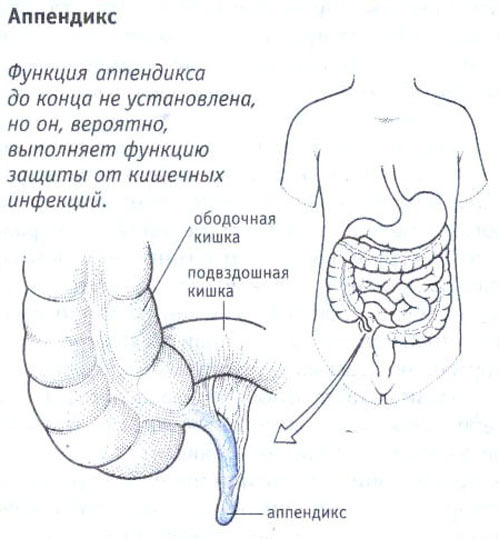
In fact, this version is not confirmed by anyone and nothing, but certain factors that can still provoke an inflammatory process in the appendix of the cecum, physicians and scientists are identified:
- Changes in the immune system that occurredFor no apparent reason.With this condition, the walls of the appendix become more susceptible to irritation and infections.
- Clogging of the luminal appendix of the appendix of the cecum.The cause of blockage can serve as:
- formation of fecal stones;
- helminthic invasions;
- is a tumor disease( benign and malignant).
- Inflammatory processes in the walls of blood vessels - vasculitis.
- General infectious diseases - for example, tuberculosis, typhoid fever.
Note: no one will ever be able to predict the development of the inflammatory process in the appendix of the cecum.Even if a person undergoes regular examinations, it is impossible to prevent the development of acute inflammation.
Classification of appendicitis
The forms are characterized by acute appendicitis and chronic appendicitis.In the first case, the symptoms will be pronounced, the patient's condition is very severe, emergency medical care is required.Chronic appendicitis is a condition after an acute inflammatory process with absent symptomatology.
Physicians distinguish three types of the considered disease:
- catarrhal appendicitis - the leukocytes penetrate into the mucosa of the appendix;
- phlegmonous - leukocytes are found not only in the mucous membrane, but also in the deeper layers of the tissue of the appendix;
- gangrenous - the leukocyte-affected wall of the appendix ceases, inflammation of the peritoneum( peritonitis) develops;
- perforated - the walls of the inflamed appendix are torn.
Clinical picture and symptoms of appendicitis
Symptomatic in this pathological condition is quite pronounced, doctors can diagnose quickly and accurately, which reduces the risk of complications. The main symptoms of appendicitis are:
- Pain syndrome.The localization of pain in appendicitis is the upper part of the abdomen, closer to the navel, but in some cases the patient can not indicate the exact concentration of pain.After an acute attack of pain, the syndrome "moves" to the right side of the abdomen - this is considered a very characteristic sign of inflammation of the appendix in the appendix of the cecum.Description of the pain: dull, constant, intensified only when the body turns.
Note : after a severe attack of pain, this syndrome may disappear altogether - the patients take this condition for recovery.In fact, this sign is very dangerous and means that a certain fragment of the appendix is dead and the nerve endings simply do not respond to irritations.Such an imaginary calm always leads to peritonitis.
-
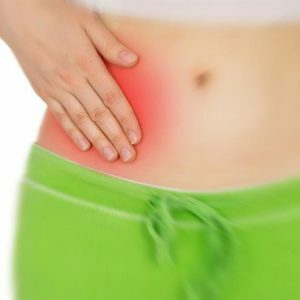 Dyspeptic disorders.This means that the patient has problems with digestion - there is a constant feeling of nausea, vomiting( single), the mouth feels a strong dryness, a loose stool of a non-permanent nature.
Dyspeptic disorders.This means that the patient has problems with digestion - there is a constant feeling of nausea, vomiting( single), the mouth feels a strong dryness, a loose stool of a non-permanent nature. - Hyperthermia.Body temperature rises to high levels.
- Unsustainable blood pressure.It can go down and rise - such changes in the indicators can occur several times a day.
- Heart palpitations.It accelerates to 100 beats per minute, the patient can feel shortness of breath, against the background of rapid heartbeat, the rhythm of breathing is disturbed.
Note : in chronic appendicitis, of all the above symptoms, only pain will be present.And it will never be acute and permanent - rather, the syndrome can be described as periodically arising.About the symptoms of appendicitis tells the doctor:
Diagnostic measures
To diagnose appendicitis, a number of examinations will be necessary:
- General examination with the definition of syndromes:
- Kocher - intermittent pain from the upper abdomen to the right side;
- Mendel - when tapping on the front wall of the abdomen, the patient complains of pain in the right ileal region;
- Shtetkina-Blumberg - the right arm is inserted into the right iliac region and then abruptly removed - the patient experiences severe pain;
- Sitkovsky - when the patient tries to turn to the left side, the pain syndrome becomes as intense as possible.
- Laboratory testing:
- is a clinical blood test;
- blood biochemical analysis;
- coprogram;
- stool analysis for the presence of hidden blood;
- urine analysis is common;
- study of feces for the presence of an egg worm;
- Ultrasound( ultrasound) of the abdominal cavity;
- electrocardiogram( ECG).
Note: a patient interview, a history of life and illness is only recorded in the initial stage of inflammation in the appendix of the cecum.
In case of an acute attack, an emergency operation is performed when the diagnosis is confirmed using the above-described syndromes.Detailed information on the causes, signs of acute appendicitis, as well as on the methods of treatment - in the video review:
Surgery for the removal of apendicitis
Treatment of an acute attack of the inflammatory process of the appendix of the cecum is possible only surgically - no therapeutic measures should be taken. The patient is prepared for an operation to remove the inflamed appendix as follows:
- Partial sanitization of the patient is performed, but it is advisable to completely take a shower.
- If a diffuse varicose veins has previously been diagnosed, the patient should bandage the lower limbs with an elastic bandage.Pay attention: in case of risk of thromboembolism before the surgery, you need to enter heparin drugs.
- If the patient's emotional background is labile( he is very nervous, irritated, panicking), then doctors prescribe sedatives( sedatives).
- In case of food intake 6 hours before the onset of acute appendicitis, the stomach must be cleaned - vomiting is induced artificially.
- Before the operation, the bladder is completely emptied.
- The patient is given a cleansing enema, but if there is a suspicion of perforation of the appendix wall, then purging of the intestine by forced means is strictly prohibited.
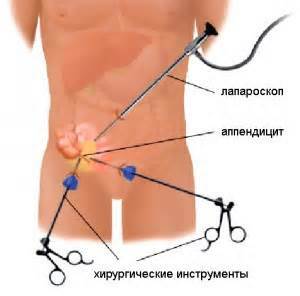 The above described events should end two hours before the surgery. The surgeon's work can be done in several ways:
The above described events should end two hours before the surgery. The surgeon's work can be done in several ways:
- The classical method of carrying out the operation - the abdominal wall( front) is cut, the inflamed vermiform appendix is cut out.
- The laparoscopic method is a more gentle method of surgery, all manipulations are performed through a small hole in the abdominal wall.The reason for the popularity of the laparoscopic method of surgical intervention is a short recovery period and a practical absence of scars on the body.
Please note: if you have symptoms of inflammation of the appendix of the cecum( or similar signs of sappendicitis), you should immediately seek help from a doctor.It is strictly forbidden to take any painkillers, apply a heating pad to the site of pain, put an enema and use drugs with laxative effect.This may provide short-term relief, but subsequently such measures will hide from the specialist a true clinical picture.
Postoperative period and diet after appendicitis
After the operation to remove appendicitis, the recovery period implies adherence to diet No. 5. It includes:
It includes:
- soups on vegetable broth;
- compotes;
- low-fat boiled beef;
- fruit( non-acidic and soft);
- beans;
- crumbly porridge.
Larder, fatty foods, fatty meat and fish, black coffee, chocolate, spices and sauces, milk and sour-milk products are excluded from the diet.
Please note : in the first 2 days after the surgery, only broths on chicken, still water with lemon, and not strong tea can enter the diet.From 3 days, you can gradually enter the allowed products.To a normal menu, you can return only after 10 days after the removal of an inflamed vermiform appendix of the cecum.To maintain immunity in the postoperative period, you need to use vitamin complexes, as well as preparations containing iron and folic acid.
About proper nutrition after removal of appendicitis tells the surgeon:
Possible complications and consequences of appendicitis
The most serious complication of appendicitis is peritonitis.It can be limited and unlimited( spilled).In the first case of the patient's life, there is nothing to threaten if the assistance is on a professional level.
With diffuse peritonitis develops rapid inflammation of the peritoneum - in this case, delay leads to death. Doctors distinguish other complications / consequences of the inflammatory process under consideration:
- suppuration of a wound left after surgery;
- bleeding intra-abdominal;
- formation of adhesions between the peritoneum, abdominal organs;
- sepsis - develops only with peritonitis or an unsuccessful operation.When the surgeon's rupture occurs, the appendix bursts and its contents pour out through the peritoneum;
- pylephlebitis purulent type - develops inflammation of a large vessel of the liver( portal vein).
Preventative measures
There is no specific prevention of appendicitis, but to reduce the risk of developing inflammation in the appendix of the cecum the following recommendations can be adhered to:
- Correction of the diet.This concept includes limiting the use of greens, hard vegetables and fruits, seeds, smoked and too fatty foods.
- Timely treatment of chronic inflammatory diseases - there were cases when inflammation of the appendix of the cecum beginning with the penetration of pathogenic microorganisms from the patients of the palatine tonsils( with decompensated tonsillitis).
- Detection and treatment of helminthic invasions.
Appendicitis is considered not a dangerous disease - even the probability of complications after surgery does not exceed 5% of the total number of operations.But such a statement is only relevant if the patient's medical care has been provided in a timely and professional manner.
Tsygankova Yana Aleksandrovna, medical reviewer, therapeutist of the highest qualification category.

